
9 Fitness Ads That Actually Work (And Why Yours Should Too)
April 2, 2025

Written By Katja Orel
Lead Editor, UGC Marketing

Edited By Léo Blanc
Head of SEO

Fact Checked By Sebastian Novin
Co-Founder & COO, Influee
Great fitness ads don’t just push a product—they move people.
The most powerful d campaigns hit something deeper. They tell inspiring stories that stick, stir up real emotion, and bring people together around a shared goal: feeling stronger, inside and out.
Some spotlight grit. Others celebrate self-love, mental clarity, or the joy of movement. But they all have one thing in common—they make fitness feel human.
If you want your e-comm ads to connect, convert, and stay top-of-mind, these 9 campaigns are your blueprint. Each one shows what’s possible when you trade hype for honesty and marketing for meaning.
Let’s break down what made them work—and the creative approach you can borrow for your own.
TL;DR
- It builds community. People want to feel like they’re part of something bigger.
- It taps into emotion. Actual failure or success stories connect more than any sales pitch ever could.
- It embraces all bodies. Inclusivity isn’t a bonus—it’s the baseline.
- It uses real people. Video, testimonials, transformations—authenticity wins.
- It goes beyond looks. Mental health, confidence, and joy are just as powerful as six-packs.
Want to create fitness advertisements that stand out in 2025? You’re in the right place.
This guide breaks down 9 ad campaigns that nailed it—and shows you how to bring those same strategies to life in your own brand.
UGC videos starting at $79

12900+ Vetted Creators in USA
The Power of Fitness Ads
The best fitness ads aren’t just background noise—they’re the push people didn’t know they needed.
When they’re done right, these ads resonate deeply with their target audience. They connect people, shift mindsets, and remind them they’re not in it alone.
The best fitness ads (just like sports ads) use empowering messages to change minds, encourage people to dream big, achieve greatness, and dream crazier. They speak directly to their audience, engage customers, and stand behind the brand's commitment to support their fitness goals, peak fitness performance, and healthy lifestyle.
There’s something powerful about seeing someone else show up, struggle, and still push through. That energy is contagious. It’s what gets people to stop scrolling, lace up, and move.
Just look at Under Armour. What started as a basic athletic brand is now a symbol of mental toughness. Their campaigns don’t just highlight sweat—they tap into resilience. It's not about looking strong. It’s about refusing to quit. And yeah, that resonates.
Then there’s video—arguably the most powerful tool in the fitness ad playbook. But not the polished, overproduced kind. We’re talking raw, real journeys. Sweat, slip-ups, small wins. That’s the stuff people connect with. That’s what gets shared.
When you tell a story through video, you’re not just showing what’s possible—you’re making people believe they can get there too. You make their fitness goals possible.
UGC videos starting at $79

12900+ Vetted Creators in USA
9 Fitness Advertisements to Inspire Your Next Campaign
The fitness industry is fast-paced, and you'll need more than a great product to stand out.
These fitness advertising campaigns show how today’s top health and fitness brands are using powerful video ads, inclusive storytelling, and emotional messaging to drive engagement and build lasting loyalty.
Here’s what’s working in gym ads—and how you can use it to shape your next campaign.
1- Nike's "You Can't Stop Us"
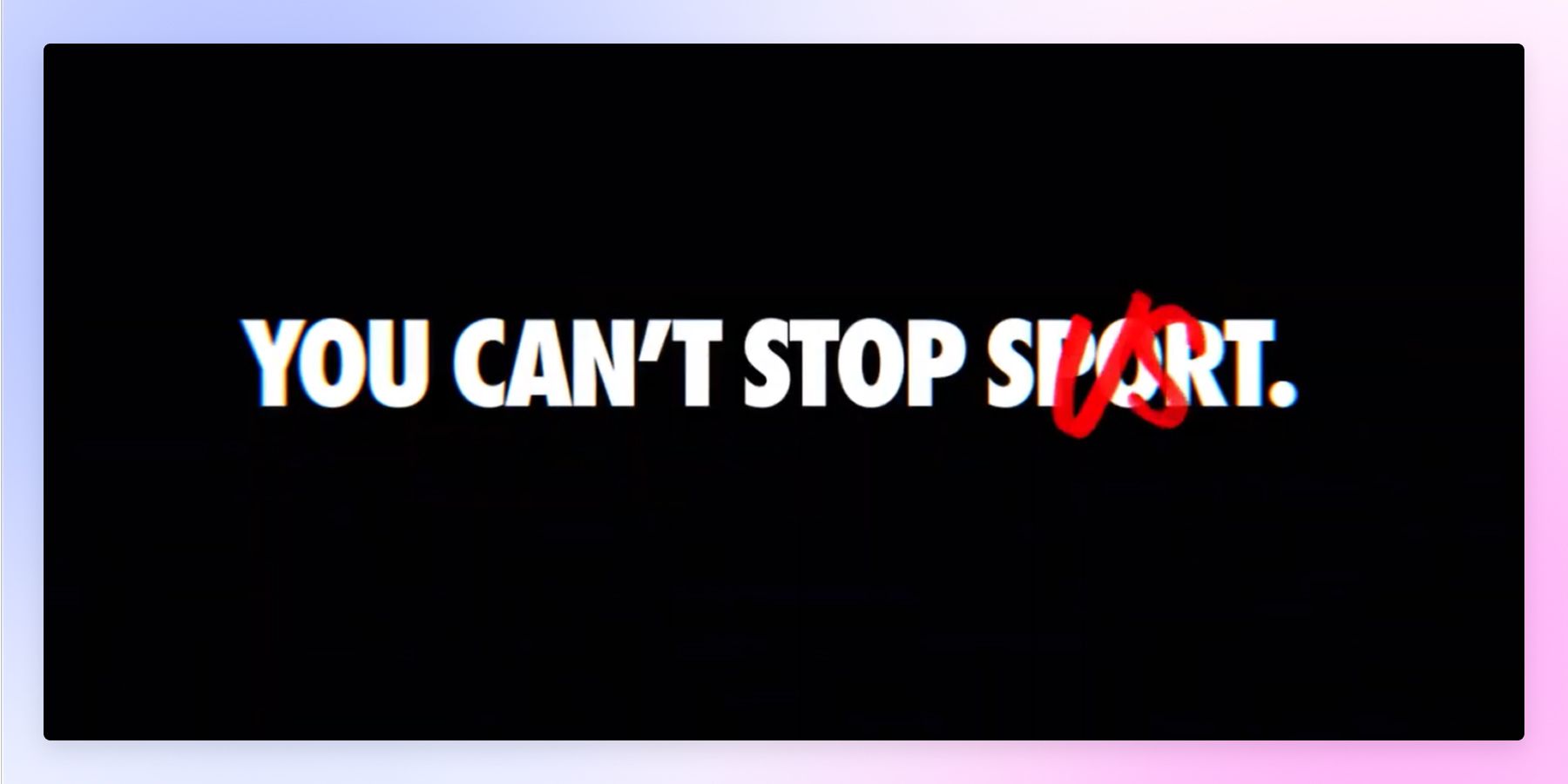
This wasn’t just an ad. It was a rallying cry.
Nike launched their iconic campaign “You Can’t Stop Us” at a time when the world was craving hope. And they showed up—boldly, emotionally, and with incredible timing.
The video’s now-iconic split-screen pairs athletes from different backgrounds and sports in one fluid, powerful sequence. You can’t help but watch. And feel it.
The message? No matter who you are, where you’re from, or what you’re facing—you’re not doing it alone. That kind of positive message doesn’t just land—it sticks. With over 100 million views on YouTube and a Snapchat lens that let fans become part of the story, Nike didn’t just talk about community. They built one.
And when voices like Serena Williams and Michael Jordan show up, it hits even harder. Not just because they’re icons—but because their stories reflect what so many people are living through: struggle, perseverance, and triumph.
The big takeaway? Emotional storytelling + inclusive visuals = real brand connection. Nike didn’t just motivate people to move. They made them believe they belonged in the fight.
They showed them how to dream crazier achieve greatness. And increase brand awareness and strengthen fan base at the same time, like with their fitness UGC campaign idea.
2- Peloton's "Together We Go Far"
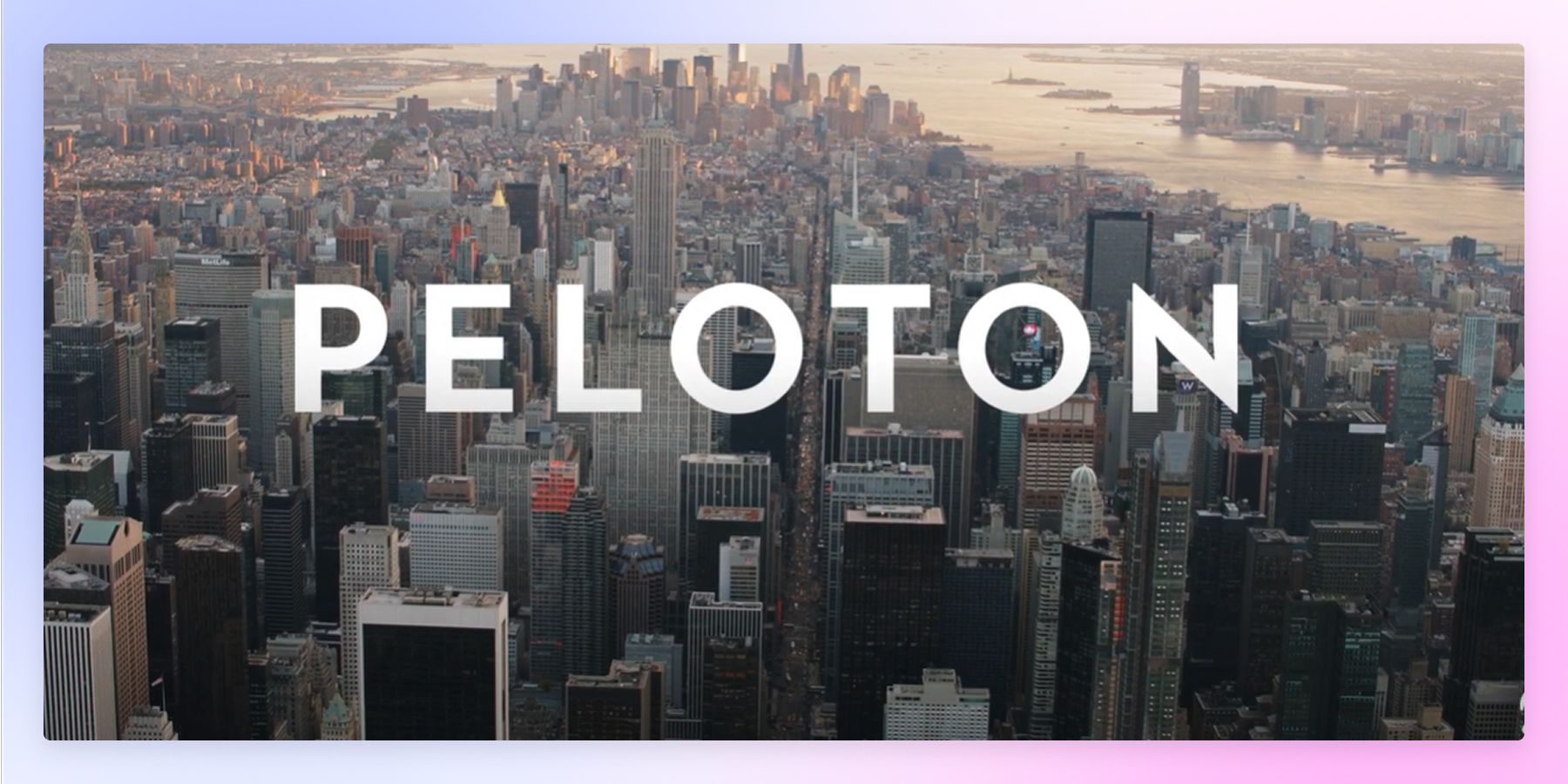
Peloton flipped the script on what solo workouts look like.
Their “Together We Go Far” campaign wasn’t just about burning calories—it was about breaking isolation.
The message? Fitness doesn’t have to be a solo mission. It can be shared, supported, and way more human. That really clicks with people who crave connection, not just results.
Instead of focusing on abs or speed, Peloton spotlighted real people in their ad campaign. All ages, all body types, all walks of life—riding together. That kind of visibility builds trust. It says, “You’re welcome here.”
What really sets the campaign apart is its emotional core.
It’s not just about getting fit. It’s about feeling better—less stress, more energy, a stronger sense of self. The physical stuff? That’s just part of it.
They’re not selling a bike. They’re offering a lifestyle grounded in consistency, community, and small wins that actually feel good.
Bottom line? When fitness brands highlight the emotional and social side—not just the physical—people connect more deeply. Peloton nails that. It’s the journey, not just the finish line.
3- Blink Fitness' "Mood Above Muscle"
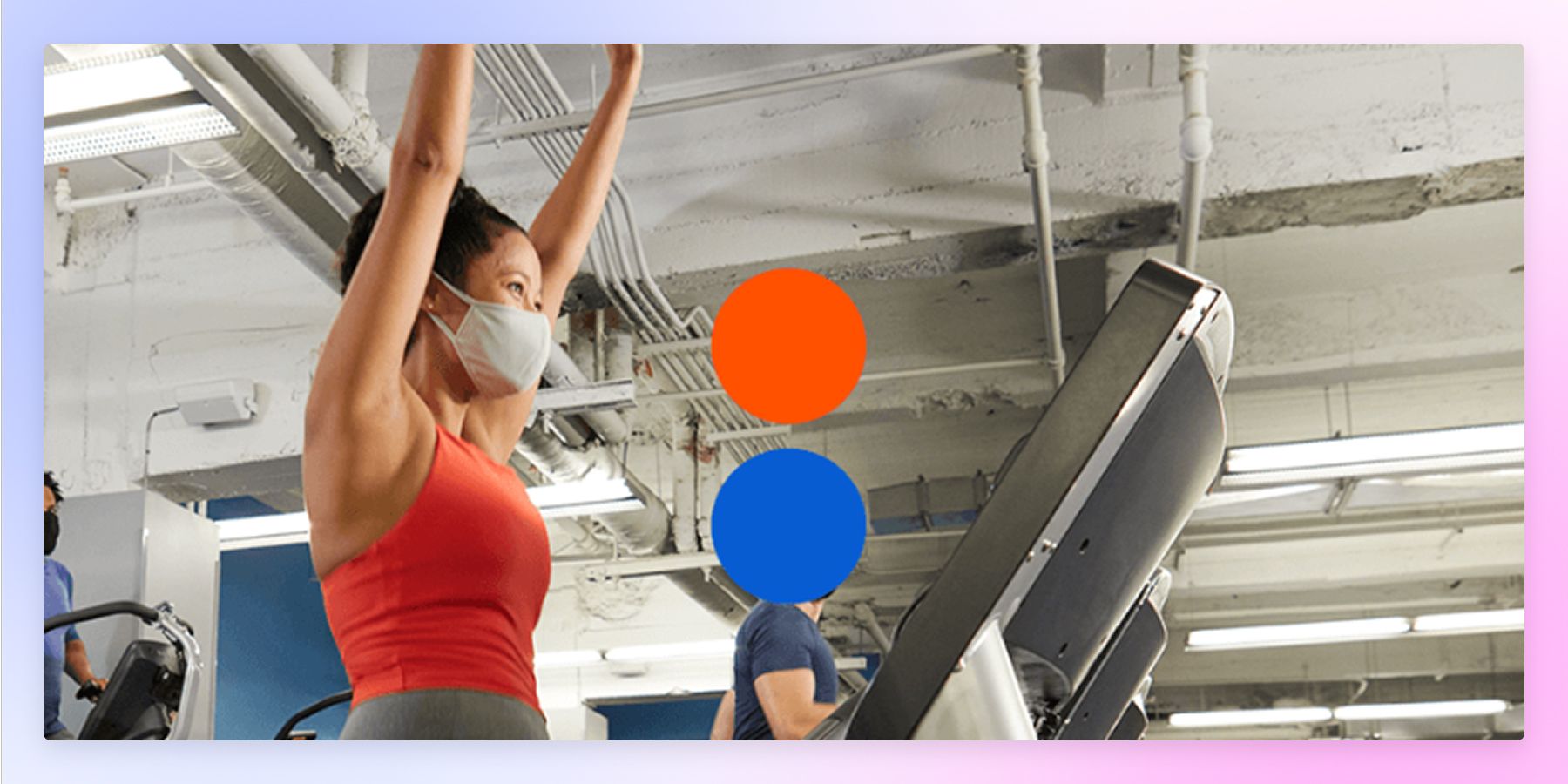
Blink Fitness didn’t chase six-packs. They chased how you feel.
In a world where fitness ads are all about aesthetics, Blink’s “Mood Above Muscle” campaign flipped the script—and stood out.
They didn’t put sculpted bodies front and center. Instead, they focused on emotional wins, like walking out of the gym feeling better than when you walked in.
Their message was simple: It’s not about looking a certain way—it’s about feeling good in your own skin. And that landed hard with people tired of toxic fitness industry standards.
The “Every Body Happy” series made it even more real. Actual members. Real bodies. No filters, no pressure. Just people making progress. That kind of authenticity made Blink feel less intimidating and way more approachable.
And here’s the thing: by putting emotional well-being first, Blink didn’t just create feel-good vibes. They built real loyalty.
The takeaway? When you make people feel seen and supported, you don’t just grab attention—you build trust. Blink turned positivity into serious fitness brand power.
4- Under Armour's "The Only Way Is Through"
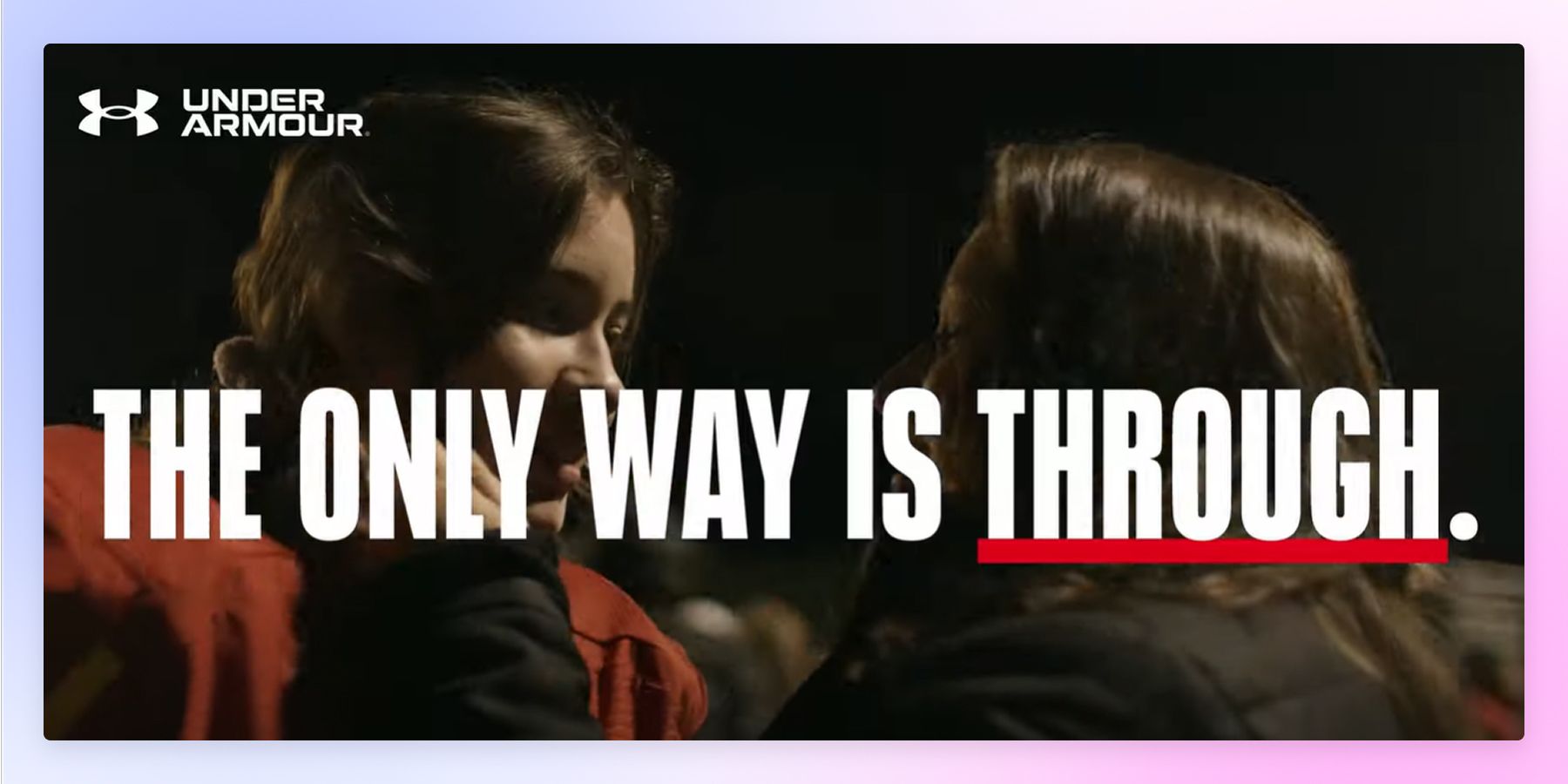
This campaign doesn’t comfort you. It calls you out.
Under Armour’s “The Only Way Is Through” is about one thing—pushing past your limits. Physically. Mentally. Emotionally.
Whether it's to lose weight, boost physical activity, healthy lifestyle, or tone physical appearance.
It’s raw.
It’s intense.
And it hits that moment we all know—the one where quitting feels easier, but you keep going anyway.
The ads feature athletes from every background, but the core message stays the same: it’s not about being gifted. It’s about being relentless. Whether you’re training for gold or just trying to show up on a Monday, the message lands—growth demands discomfort.
What really makes this ad campaign powerful isn’t just the visuals of grit and grind. It’s the honesty. Real stories. Real struggle. Real people showing what it takes.
Here’s the takeaway: Motivation doesn’t always feel good—and it shouldn’t. The most powerful fitness ads are the ones that tell the truth: progress hurts. And that’s what makes it real.
5- Adidas' "Impossible Is Nothing"
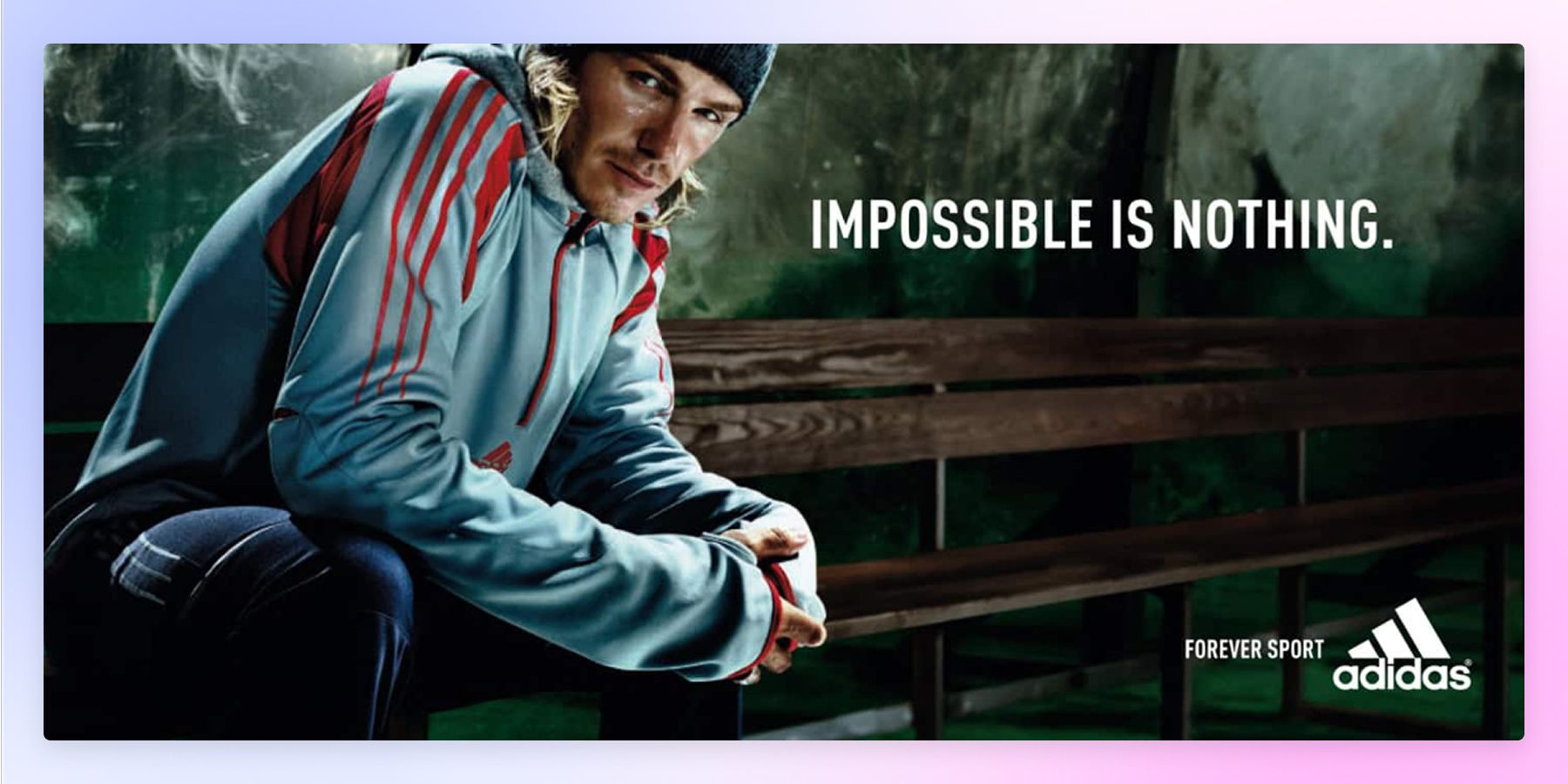
Adidas didn’t just launch a tagline—they threw down a challenge.
The fitness ad campaign “Impossible Is Nothing” has been around, but they gave it new life by pairing it with real, inspiring stories of grit and belief. From Muhammad Ali’s iconic legacy to everyday runners rewriting their own stories, this campaign wasn’t about selling sneakers—it was about changing how people see their limits.
Instead of spotlighting flawless athletes, Adidas focused on progress. Setbacks. Comebacks. Underdogs proving everyone wrong. And they didn’t just say it—they showed it, with giant street murals that made people stop and feel it.
It didn’t play like an ad. It felt like a statement: the only real limits are the ones we believe in.
The takeaway? When a (fitness) brand leads with possibility instead of product, it lights something up in people. Adidas blended legacy with local heroes to make one thing clear: your biggest opponent is usually the voice telling you you can’t.
6- Gatorade's "Win From Within"
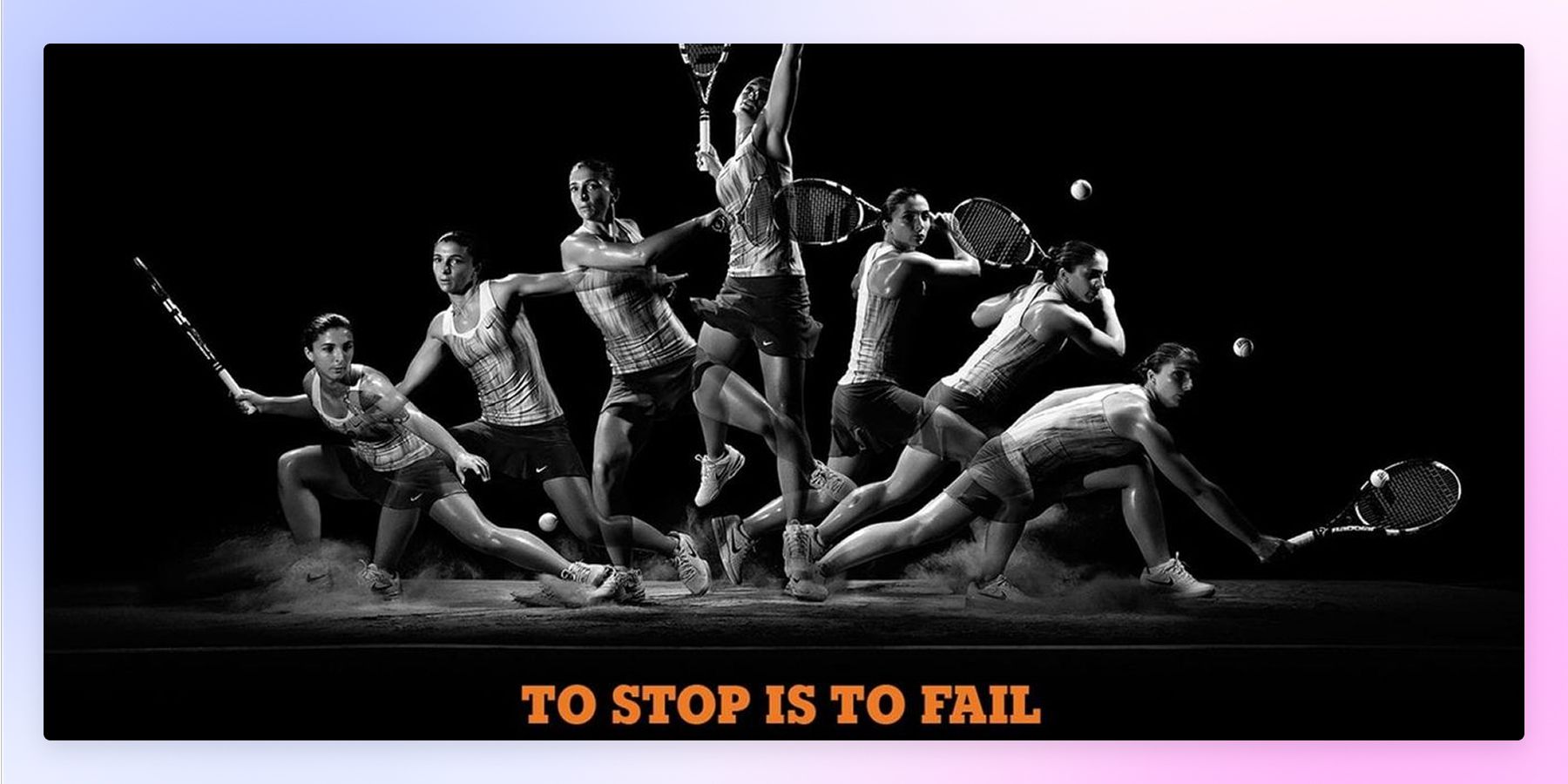
This one hits your gut before it hits your muscles.
Gatorade’s “Win From Within” ad campaign went way beyond hydration. It focused on the real battles—the ones that happen in your head. The doubts. The early mornings. The quiet moments where you choose to keep going.
It wasn’t loud or flashy. It was raw.
They showed what most ads don’t: the stare-down with yourself in the locker room, the grind when no one’s watching, the push you find when you think you’re done.
By focusing on inner strength, Gatorade told a story everyone relates to. You don’t have to be a pro to get it. We’ve all got something we’re fighting—and the powerful message was clear: you’ve got what it takes.
Takeaway? Physical strength gets attention. Mental grit earns respect. Gatorade made mindset the hero, and that’s what really stuck.
7- Reebok's "Sport the Unexpected"
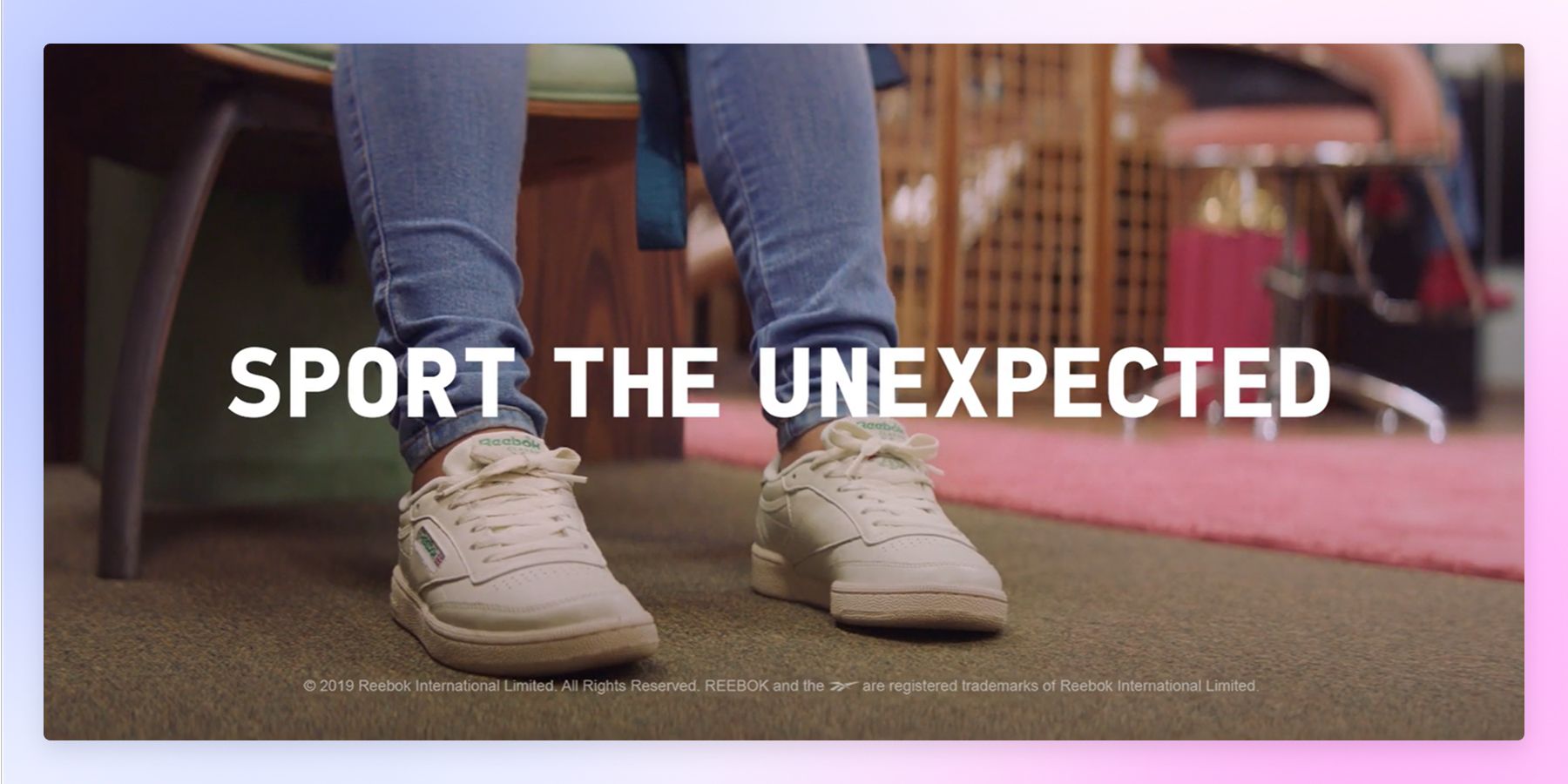
Reebok didn’t play it safe—they played it weird. And it totally worked.
“Sport the Unexpected” was bold, offbeat, and unapologetically fun.
Instead of chasing what was trending, Reebok doubled down on self-expression. Glitter-covered lifters and other exercise equipment. Dancers in chunky dad shoes. Retro jump ropes and 90s vibes everywhere. It was chaos—in the best, most memorable way.
The spotlight wasn’t on performance. It was on personality. The message? Forget fitting in. Fitness is about showing up as your full, unfiltered self.
That hit especially hard with younger audiences who were over the hyper-serious, one-size-fits-all fitness culture.
Even the visuals broke the mold—loud, messy, and full of character. The whole vibe said: come as you are, sweat how you want, and have fun doing it.
The takeaway? When you give people permission to be themselves, fitness feels like freedom. Reebok proved you don’t need to be serious to be strong—and that made them unforgettable.
8- Equinox's "Commit to Something"
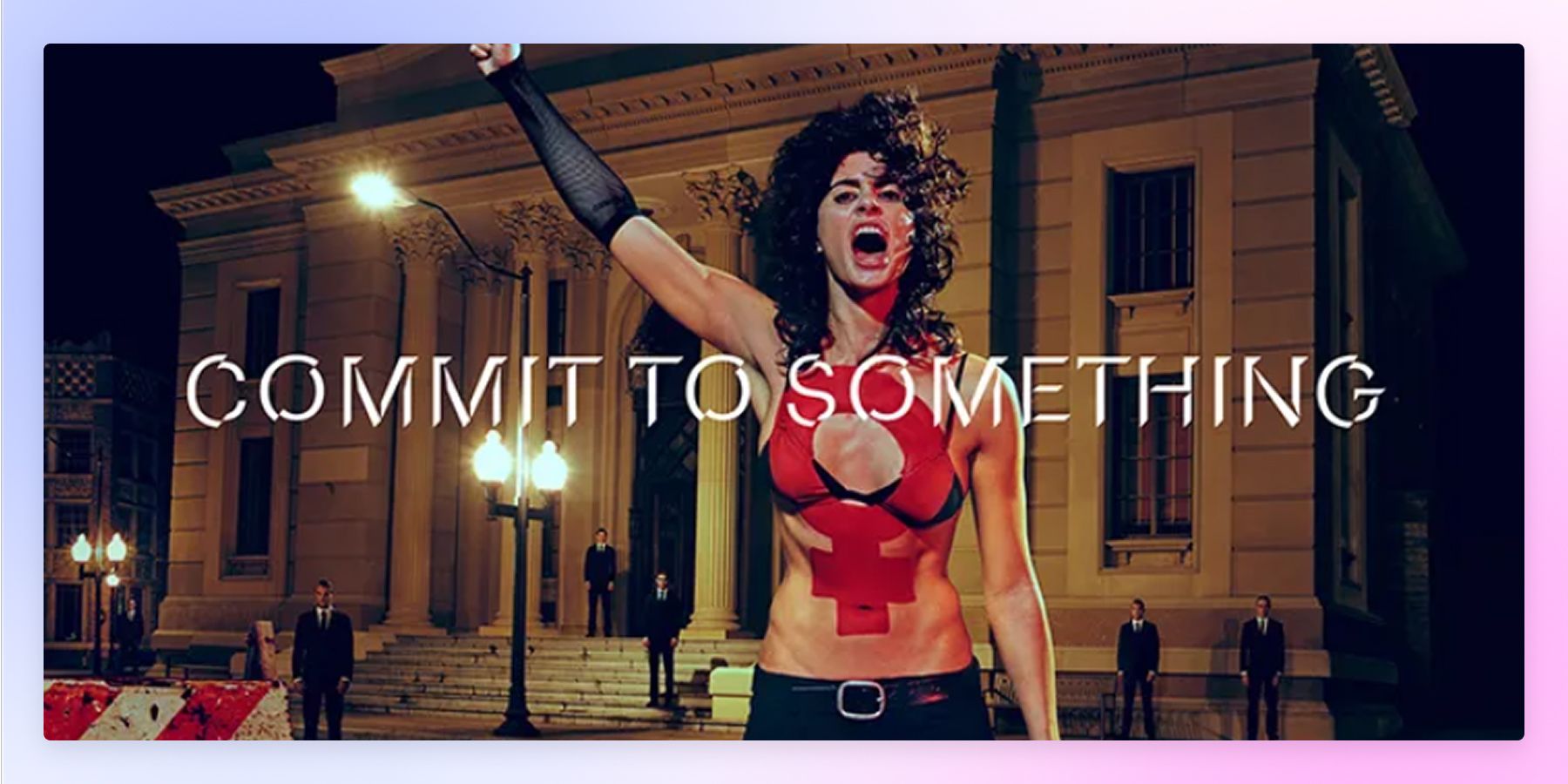
Equinox didn’t whisper motivation. They shouted it.
“Commit to Something” wasn’t just a slogan—it was a full-on challenge. These ads weren’t about baby steps. They demanded boldness. A woman lifting weights in couture. A man sprinting on a treadmill suspended mid-air. Every shot said the same thing: go all in or don’t bother showing up.
The message was loud and clear—real change takes guts. And comfort won’t get you anywhere.
Visually, the campaign didn’t play it safe. It was sleek, provocative, and a little controversial—and that was the point. It made people feel something. And in a market flooded with sameness, that’s how you get remembered.
Equinox positioned fitness as a serious commitment, not a casual side hustle. You don’t just join. You invest. You show up. You own it.
Takeaway? Bold visuals plus a crystal-clear message cuts through the noise. Equinox didn’t just sell workouts. They sold ambition.
9- Lululemon's "Sweatlife"
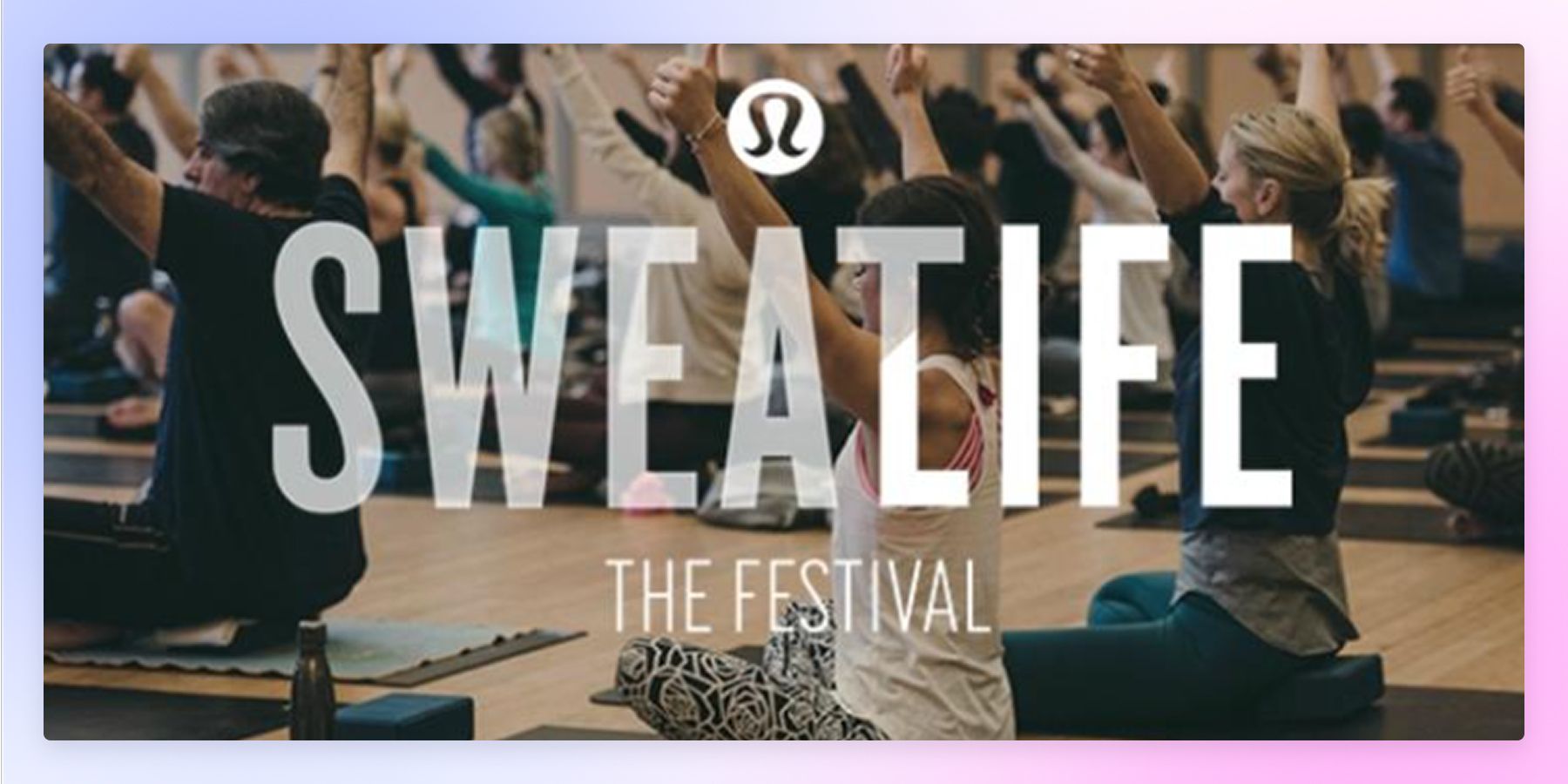
Lululemon took fitness and made it feel like home.
Their “Sweatlife” campaign was all about presence over performance. It wasn’t about grinding to fit into smaller leggings. It was about movement that makes you feel alive. Yoga, running, stretching, dancing in your living room—if it made you feel good, it counted.
The vibe? Calm. Inclusive. Zero pressure.
No body shaming. No gatekeeping. Just real people showing up for themselves, however that looked.
And that approach worked. By choosing joy over judgment, Lululemon turned gym time into me-time. The message was clear: confidence doesn’t start when you hit a goal—it starts the second you step on the mat.
Takeaway? Fitness ad campaigns don’t always need intensity. Sometimes, softness and self-acceptance go even further. Lululemon proved that calm, confidence-led branding can create just as much loyalty—especially when you make people feel welcome from day one.
How to Create Effective Fitness Advertising Campaigns

If your ad doesn’t make someone feel something, it’s just noise.
The best fitness campaigns don’t try to sell right away—they connect first. And that connection comes from telling real stories, showing personal growth and real emotion, and understanding exactly who you’re talking to.
Here’s what actually works:
1. Start with the “why.”
What truly matters to your audience? Is it confidence? Mental clarity? A sense of community? Start there and build your message around it.
2. Use real people.
Show stories that feel honest—struggles, progress, small wins. When people see someone like them, they start to believe they can do it too.
UGC videos starting at $79

12900+ Vetted Creators in USA
3. Use video to bring it to life.
Movement sparks emotion. A raw clip of someone pushing through a tough moment says more than a polished slogan ever could.
4. Let your audience do the talking.
Testimonials from real clients hit harder than any headline. When others share how it changed their lives, it builds trust.
5. Show the emotional payoff.
Less focus on “get shredded.” More focus on “I finally feel like myself again.”
Forget the hardcore sell. Focus on resonance. Because when people see themselves in your ad, that’s when they click, share, and commit.
Takeaway: The best fitness ads meet people where they are—and show them where they could go.
Positive Example: Nike's "You Can't Stop Us"
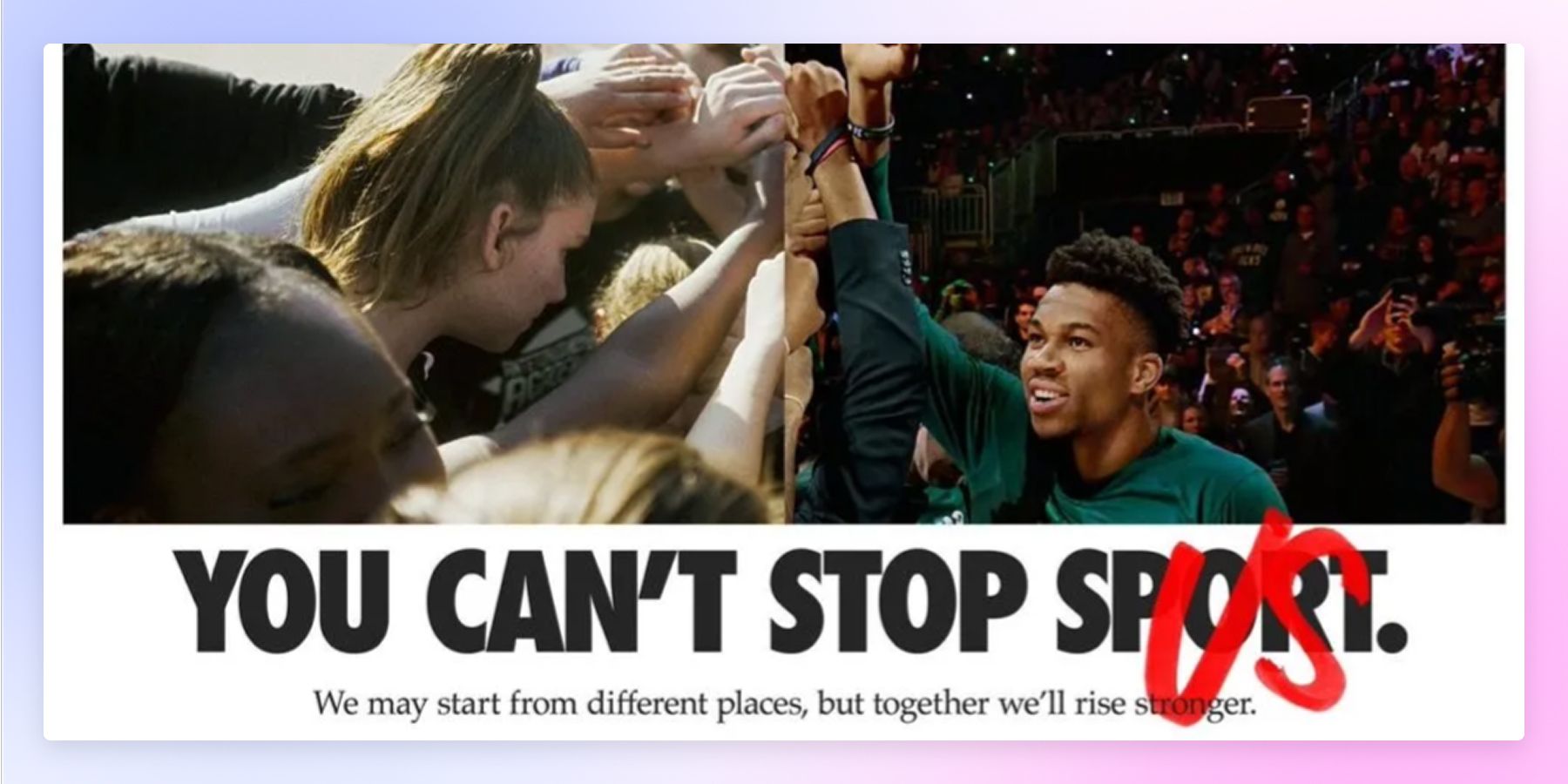
Nike nailed it. Again.
Nike's iconic campaign wasn’t just inclusive—it was magnetic. It brought together male and female athletes from all backgrounds, layered with raw emotion, and delivered a message that hit home: unity creates strength.
Everything worked—the split-screen visuals, the powerful narration, the flawless edit.
And the results speak for themselves:
Over 100 million views. Massive engagement. Real people genuinely moved to take action.
Why it worked:
- Centered on community, not perfection
- Told emotional, authentic stories
- Combined next-level visuals with a message that mattered
Nike didn’t just sell gear.
They sold belief.
A mindset.
A movement.
Negative Example: Protein World's "Are You Beach Body Ready?"
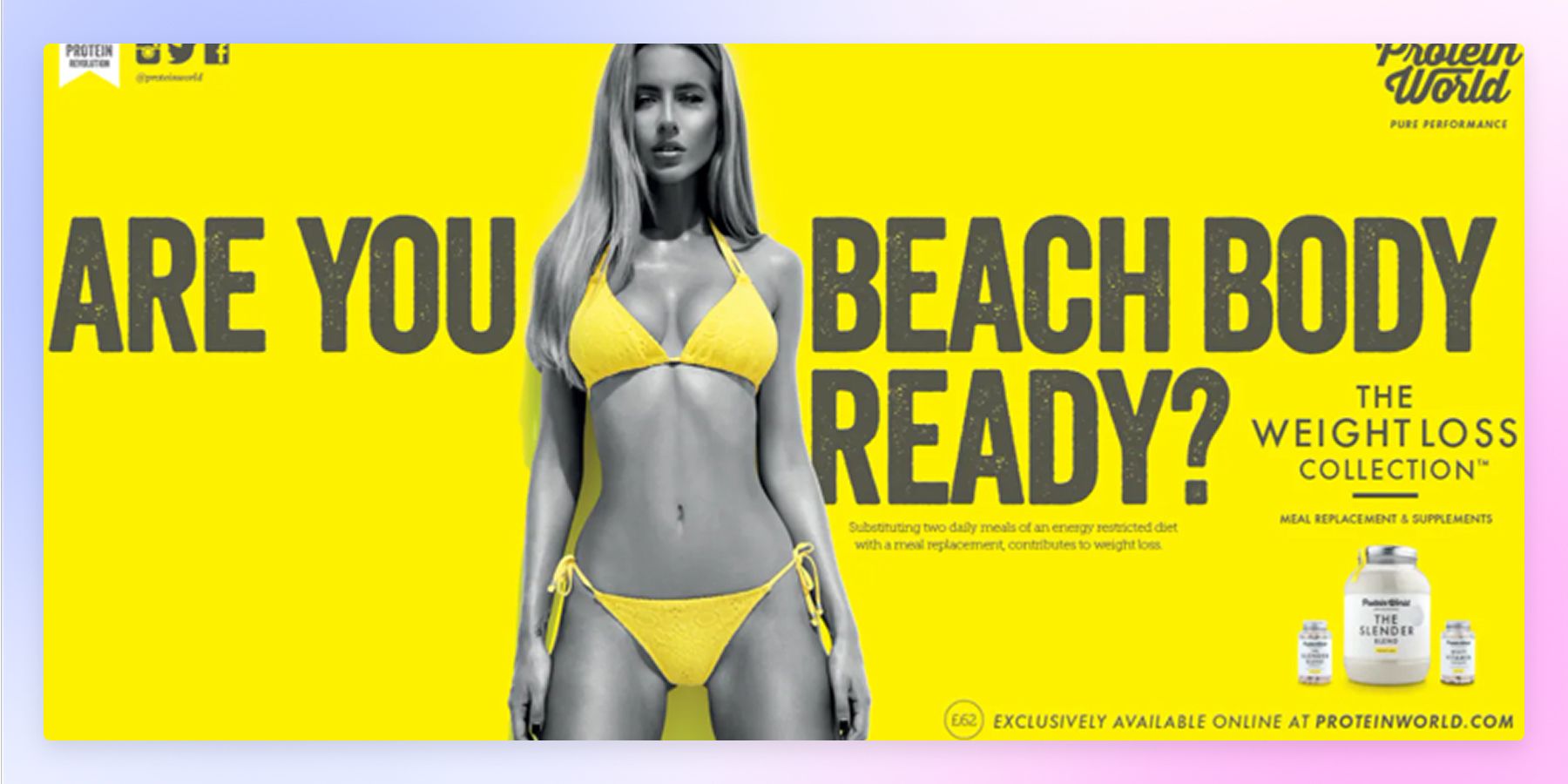
This is one of the negative fitness advertisements that went viral—but for all the wrong reasons.
Protein World's “Are You Beach Body Ready?” campaign featured a heavily photoshopped model and a message that felt more like a judgment than motivation. Instead of inspiring people to feel good, it made many feel excluded.
The backlash was swift. Accusations of body shaming flooded in, and the brand found itself in damage control mode, defending itself against controversy instead of promoting products (such as yoga mats, custom T-shirts, sports equipment, and leggings).
What went wrong:
- Messaging was unrealistic and exclusionary
- Focused on appearance over overall wellness
- Ignored core fitness values like inclusivity and self-acceptance
Bottom line?
If your ad makes people feel worse about themselves, it’s not bold—it’s broken.
UGC videos starting at $79

12900+ Vetted Creators in USA
Learn From The Best Fitness Brands: Fitness Advertisements with Customer Journeys
Want your marketing campaign to hit harder? Let your customers speak for you.
Social proof outperforms polished taglines. People trust people, and they want proof.
Testimonials are powerful because they’re real. When someone shares their story—how your gym helped them feel stronger, more energized, or more confident, live healthier lives—it doesn’t sound like advertising.
It sounds like the truth. And that’s what builds trust.
Run video ads, quotes, social captions, or even screenshots and test successful gym ads that work for your brand. Show real people getting real results for instant credibility and emotional connection. Show how your brand supports all kinds of fitness abilities and fitness activities. That's what modern fitness advertisements should be about.
The best fitness brands in 2025 aren’t pushing six-packs—they’re selling belief.
Nike speaks to unity. Peloton builds community. Blink champions self-worth. These brands win because they understand something crucial: fitness is personal. Emotional. Messy. Real.
Whether you’re looking for a digital marketing agency, launching your first advertising marketing campaign, or upgrading a previous one, lead with connection.
Tell honest stories.
Show progress, not perfection.
And respect your audience enough to meet them where they are.
Because when people feel seen, they don’t just scroll—they commit.
And when they move with you, they stick.
FAQ
Why are fitness ads important for health and wellness brands?
Great fitness ad campaigns do more than sell—they shape how people think about health. They build community, spark motivation, and help consumers see fitness as something personal, not just physical. Whether someone’s goal is to feel better, gain strength, lose weight, or boost confidence, the right ad helps them believe it’s possible—and that your brand can support them along the way.
How do customer reviews help fitness ads perform better?
People trust people. When you include real testimonials—whether it's a transformation journey or a simple quote about how someone feels better—your ad becomes more believable. Reviews give your message heart. They turn marketing into a relatable, emotional story that builds trust and drives results.
What are the risks of using negative messaging in fitness ads?
Ads that push unrealistic body standards or shame people into action usually backfire. They don’t motivate—they alienate. Today’s audiences value inclusivity, authenticity, and body positivity. If your ad makes someone feel worse, it won’t inspire them to join—it’ll push them away.
How do fitness ads actually motivate and engage people?
The best health and fitness advertisements use real stories, raw emotion, and honest visuals to connect with viewers. They show the journey, not just the end result. When people see someone like them struggling, progressing, and showing up anyway, it lights a spark. That emotional connection is what turns views into action.
Table of Contents
The Power of Fitness Ads
9 Fitness Advertisements to Inspire Your Next Campaign
How to Create Effective Fitness Advertising Campaigns
Learn From The Best Fitness Brands: Fitness Advertisements with Customer Journeys
FAQ

Work with UGC creators from  USA
USA

 USA
USA

Samantha
Wilmington

Devin
Santa Rosa Beach

Philip
Frisco

Courtney
Plover
